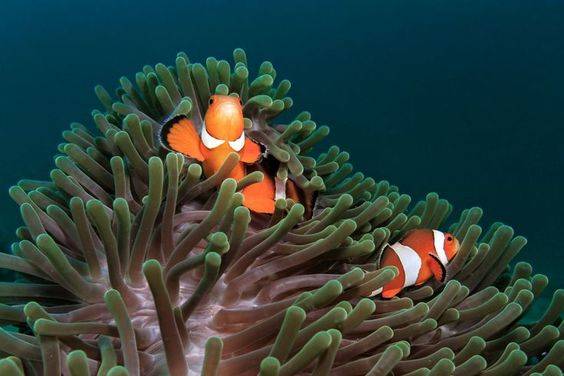Saltwater fishing is not just a hobby; it’s a passion, a lifestyle, and a thrilling adventure all rolled into one. Whether you’re a seasoned angler or a novice casting your line for the first time, the vast expanse of the ocean offers endless opportunities for excitement and challenge. In this comprehensive guide, we’ll delve into the world of saltwater fishing, exploring everything from the best techniques and gear to the most sought-after catches and conservation efforts. So grab your rod and reel, and let’s embark on an unforgettable journey into the realm of saltwater angling.

Understanding Saltwater Fishing
Before we dive into the depths, it’s essential to understand the fundamentals of saltwater fishing. Unlike freshwater fishing, which takes place in lakes, rivers, and streams, saltwater fishing occurs in oceans, seas, and estuaries. The saltwater ecosystem is home to a vast array of marine species, ranging from small baitfish to massive gamefish like marlin and tuna.
To become a successful saltwater angler, it’s crucial to familiarize yourself with the various habitats, currents, and tides that influence fish behavior. Additionally, understanding the migratory patterns of different species can help you plan your fishing trips for optimal success.
Essential Gear for Saltwater Fishing
Equipping yourself with the right gear is essential for a successful saltwater fishing excursion. Here are some must-have items for any angler venturing into the salty depths:
- Rods and Reels: Choose a sturdy fishing rod and reel combination designed specifically for saltwater use. Look for corrosion-resistant materials like graphite or stainless steel to withstand the harsh marine environment.
- Fishing Line: Opt for a high-quality monofilament or braided fishing line with sufficient strength to handle large saltwater species. Consider the water clarity and target fish when selecting the line weight and color.
- Terminal Tackle: Stock up on a variety of hooks, sinkers, swivels, and leaders to rig your bait or lures effectively. Different fishing scenarios may require different types and sizes of terminal tackle, so it’s essential to have a diverse selection on hand.
- Bait and Lures: Whether you prefer live bait or artificial lures, choose options that mimic the natural prey of your target fish. Common saltwater baits include shrimp, squid, and baitfish, while lures come in a variety of shapes, colors, and actions to entice hungry predators.
Techniques for Success
Mastering a variety of fishing techniques is key to maximizing your chances of success in the unpredictable world of saltwater angling. Here are some tried-and-true methods to help you reel in the big ones:
- Bottom Fishing: Drop your bait or lure to the ocean floor and wait for bottom-dwelling species like grouper, snapper, and flounder to take the bait. Use heavy sinkers to keep your rig anchored in place amidst strong currents.
- Trolling: Troll your bait or lures behind a moving boat to cover large areas of water and target fast-swimming pelagic species like tuna, mahi-mahi, and wahoo. Adjust your trolling speed and depth based on water temperature, surface conditions, and fish activity.
- Casting and Retrieving: Cast your bait or lures near structure, reefs, or feeding frenzies and retrieve them with varying speeds and movements to mimic fleeing prey. This technique is particularly effective for catching aggressive predators like barracuda, jacks, and mackerel.
- Drifting: Drift with the current or wind while presenting your bait or lures at different depths to intercept cruising fish. Experiment with different drift speeds and directions to cover a wide range of habitats and maximize your chances of hooking up.
Target Species and Hotspots
From inshore flats to offshore canyons, saltwater fishing anglers have no shortage of target species and hotspots to explore. Here are some popular gamefish and their preferred habitats:
- Snook: Target these ambush predators in mangrove shorelines, docks, and bridges using live bait or artificial lures. Look for moving water and structure, and be prepared for explosive strikes and powerful runs.
- Redfish: Seek out shallow flats, oyster bars, and grassy areas where redfish feed on crabs, shrimp, and small fish. Use stealthy approaches and accurate casts to entice wary redfish into striking your bait or lures.
- Tarpon: Pursue the “silver king” in coastal waters, channels, and passes during their annual migration. Present live bait or large swimbaits near bridges, jetties, and tarpon schools, and prepare for acrobatic leaps and blistering runs.
- Marlin: Head offshore to deep blue waters and underwater seamounts where marlin patrol in search of prey. Troll large artificial lures or rigged baits behind your boat at varying depths to attract the attention of these majestic billfish.
Conservation and Responsible Fishing Practices
As stewards of the ocean, it’s our responsibility to protect and preserve its delicate ecosystems for future generations of anglers to enjoy.
- Practice Catch and Release: Whenever possible, release undersized or non-target species unharmed to ensure their survival and reproductive success. Handle fish with care, minimize fight times, and use barbless hooks to facilitate safe release.
- Respect Bag and Size Limits: Familiarize yourself with local regulations and adhere to bag and size limits for different species to prevent overfishing and maintain healthy fish populations. Keep only what you need for consumption and release the rest to swim another day.
- Dispose of Trash Properly: Dispose of fishing line, hooks, and other trash responsibly to prevent entanglement of marine wildlife and damage to coral reefs and underwater habitats. Pack out what you pack in, and leave the environment cleaner than you found it.
- Support Conservation Efforts: Get involved in local conservation initiatives, volunteer for beach cleanups, and support organizations dedicated to protecting marine ecosystems and promoting sustainable fishing practices.
Inference
Saltwater fishing is more than just a pastime; it’s a way of life that connects us to the natural world and fosters a deep appreciation for the wonders of the ocean. By mastering the techniques, gear, and conservation practices outlined in this guide, you can embark on unforgettable fishing adventures while ensuring the long-term health and vitality of marine ecosystems. So gather your gear, set sail into the sunset, and let the salty breeze guide you to fishing paradise. Tight lines and happy angling!







